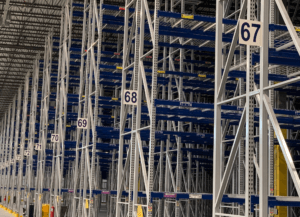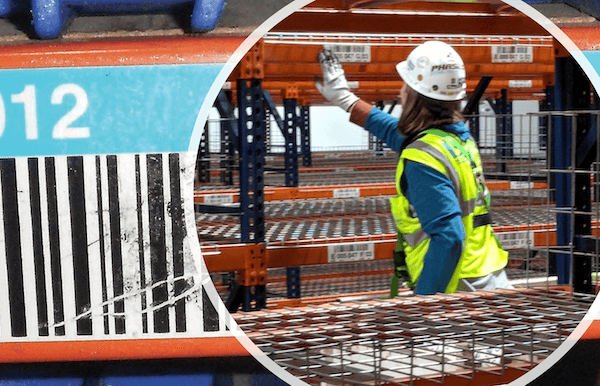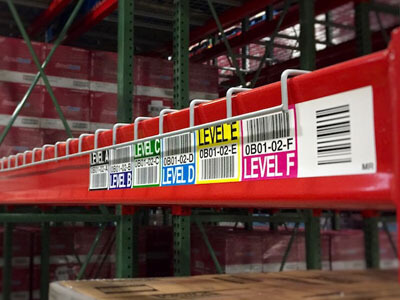Structural vs. Roll Form Steel: Labeling Insights for Both Warehouse Racking Types
One of the most important decisions a warehouse operator can make is determining which type of steel to use for pallet racking. Both structural steel and roll form steel offer distinct advantages depending on your operation’s needs.
In this blog, we break down the differences between structural and roll form steel racking and offer some insights to consider from a labeling standpoint.

“The surface of the two metals is slightly different. Structural ![]() racking has more bumps on it, while roll form is usually a lot smoother because it’s powder coated after it goes through the machine. And powder coating makes for an extremely smooth surface.”
racking has more bumps on it, while roll form is usually a lot smoother because it’s powder coated after it goes through the machine. And powder coating makes for an extremely smooth surface.”
– Brian Blair, ID Label

Structural vs. Roll Form
The primary difference between structural and roll form steel is how each is made. Structural racking is cast steel. It’s made with molten metal that’s poured into a cast, then cooled and hardened into the shape required. Roll form starts with a rolled sheet of metal that’s run through a machine, then cut, stamped and bent into the required shape to form a beam or an upright.
These different production methods lead to a couple of other key distinctions between the two racking types.
“The surface of the two metals is slightly different,” said Brian Blair, installations manager at ID Label. “Structural racking has more bumps on it, while roll form is usually a lot smoother because it’s powder coated after it goes through the machine. And powder coating makes for an extremely smooth surface.”
The advantages of roll form steel are that it is more widely available, more affordable, and less expensive to ship thanks to its lighter weight. However, the primary structural steel advantage is that it can be engineered more specifically to meet exact parameters. Structural steel also offers sustainability benefits, as it contains 93% recycled material on average.
But which form of steel is best for your warehouse’s needs? Blair says it depends on your application.
“Structural is for heavier loads and will be found in racking for food warehouses,” Blair said. “It also depends on what the racking is. If it’s push-back racking or anything that requires much more structure, you’ll generally have structural steel.
“A standard pallet rack will use roll form. If it’s for heavier loads, it’s determined by the engineers. They determine what are you storing, how many pallets are being stored on the system and they’ll make that determination.”

Labeling challenges for structural and roll form steel racking
Both structural and roll form racking present their own challenges from a labeling perspective. Applying labels to structural steel can be problematic given the bumpier surface.
“It’s sometimes harder to get a label to stick to structural steel because the surface is not necessarily smooth.” Blair said. “You can also have issues if the rack is brand new and sometimes the paint isn’t fully cured.”
Moisture can also be a concern for structural steel racking, which is the thicker option.
“There’s potential humidity issues with structural steel,” Blair said. “It’s often a quarter of an inch thick, solid steel. When you have a big temperature difference during installation, that can cause condensation to form on the rack itself, which can interfere with labels.”

Roll form steel doesn’t carry the same concerns, as it has a smoother surface and is a thinner material. However, roll form is susceptible to residue left behind from old labels.
“Roll form beams could be really old and covered with old labels that leave residue,” Blair said. “They could be old to the point where they’re rusting and the paint could be chipping off.”
Regardless of whether you choose structural or roll form steel, Blair says the key to successful labeling is to keep your racks clean.
“A label is only going to stick to what you’re applying it to,” Blair said. “If your rack is covered with dust, you’re applying a label to dust. The dust will come off and so will your label. It’s important to get your rack as clean as it can before labeling.”

The ID Label Advantage
ID Label manufactures extremely durable warehouse rack labels. Our materials have been tested and used in warehouse operations around the globe.
We also provide warehouse signage and turnkey nationwide installation services to provide a complete solution to our many clients who rely on us for all their warehousing needs.
Interested in learning more? Contact us today.